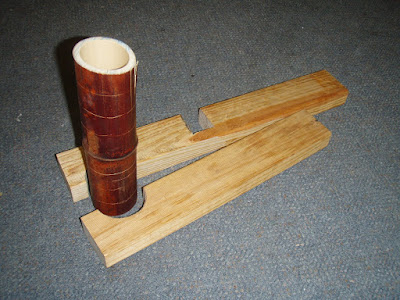- Friendly people so long as you don't talk about land or land ownership
- Hot arid country
- Many young and old people but very few middle aged because of all the conflict
- Concrete blocks are the fastest way to build in timor leste
- The site has great sea breezes & has its own micro climate which is much more pleasant than the hot and humid climate of Dili
- Diverse cultures live in the area
- Long timber poles used for construction of traditional dwellings
- Raised buildings
- Portuguese part of local history for 400 years
- Keen to build out of bamboo
- Lulic = spiritual person / house
*Images Pinched from Google
From the presentation I gathered that there was still a lot of tension within timor leste. As Ian said most of the fighting is either political or for land as so much of the official documents and land titles have been either destroyed or lost in the fighting.
The Portuguese were in timor leste for over 400 years so there is a lasting impression on the built environment.

13 different states all with their own cultures, customs and laws. This makes unification of timor leste a daunting prospect.

![[Lonely+Road.JPG]](https://blogger.googleusercontent.com/img/b/R29vZ2xl/AVvXsEiBqJ3EsEJexWDtLqQgW2QX9-o3uB-fQsx1PcO7zuQWaxGe5IQgYoeVzSM_5suw-C0ezGE2ZyDgWYw-THAEau2OP9NO1rWFDzLLK0r6kZ0rQiocopljqmflNHqk_VvJ2BTl2EPDSo_0bQY/s1600/Lonely+Road.JPG)
![[Atauro+Beach.jpg]](https://blogger.googleusercontent.com/img/b/R29vZ2xl/AVvXsEiL0Z6Wazl41xF_gvmuWIpdpqYrRe5iZ1yVxyo37NoVvlDUH0EX1qp5kB5S18KT1UICKC91WLjotKEB7o9BUaz2sodddN5eumsb9EQUkM4bOxAFZ0iM06fqRD-uqa5HOUFJuCZKX8PthneX/s1600/Atauro+Beach.jpg)
![[Atauro+Beach+(2).JPG]](https://blogger.googleusercontent.com/img/b/R29vZ2xl/AVvXsEht5Wpevk54QOgr70ERfsA6GdncQOcQMeYR89L0Pg8t0fjzhYfUdLg0IbWl60cQHBf2BaYLyiQVQ0LB7KXPsl5sob9hIrQKMGhhmANjFzmWPCTZHPZ6nV14MnvMMdbVhcAtaDQCdM7eRiFI/s1600/Atauro+Beach+(2).JPG)

The traditional Timor Leste houses are very much in tune with the local environment and the landscape they occupy. Vernacular architecture has always been a great interest of mine because it is everything that modernism is not, it is unique, it is sensitive to the local environment, it an evolutionary process not a mass produced and finite product. How can you make a flat pack system that is fundamentally a mass produced product into something that responds to the genius loci of a place?




















